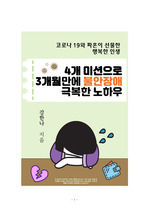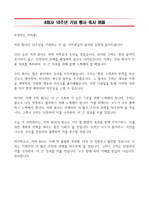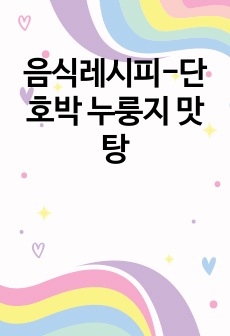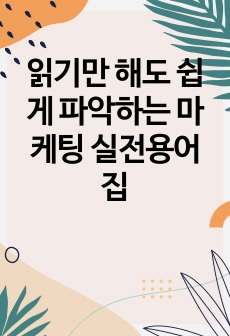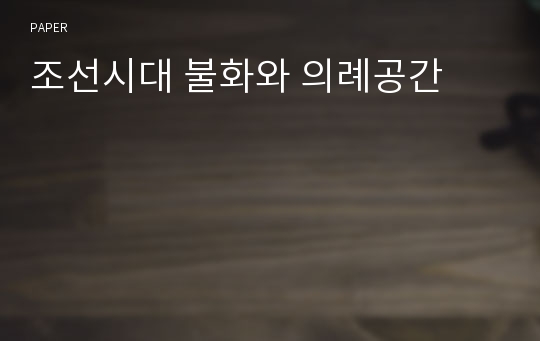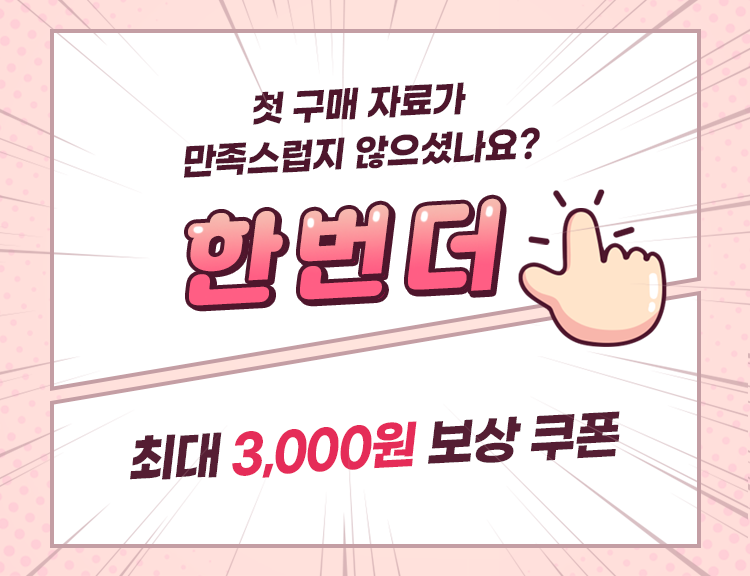* 본 문서는 배포용으로 복사 및 편집이 불가합니다.
서지정보
ㆍ발행기관 : 동방문화대학원대학교 불교문화예술연구소
ㆍ수록지정보 : 불교문예연구 / 6권
ㆍ저자명 : 정명희
ㆍ저자명 : 정명희
목차
Ⅰ. 머리말Ⅱ. 주불전 내부의 의식과 불화
Ⅲ. 야외의식과 괘불
Ⅳ. 맺음말
한국어 초록
조선시대 신앙활동에 있어서 불교의식의 비중은 매우 증가하여, 건축, 불 상, 공예 등 불교미술 전반에서 의식문화의 영향이 광범위하게 확인된다. 본 고에서는 불교의례의 성행이 가져온 변화를 불교회화의 측면에서 살펴보았 다. 불화와 의례공간의 관련성은 주불전 내부의 의식과 야외 의식이라는 두 가지 측면에서 조망할 수 있다. 예배 공간으로 인식되던 주불전(主佛殿)은 다양한 법회(法會)와 의례가 개 최되는 공간으로 활용되었고, 전각 내부에는 의식 수요에 부응하는 불화가 봉 안되었다. 불보살을 도량[道場]에 청해 공양을 권하는 권공(勸供)과 육도의 중 생을 청하여 음식을 베푸는 시식(施食) 의례는 특정 의식에 한정되지 않고 불 교 문화 전반에 영향을 미쳤다. 수륙재의 성행은 특히 삼단의례(三壇儀禮)라 는 형식을 통해 저변화되었다. 그 결과 주불전 안에 상단(上壇), 중단(中壇), 하단(下壇)의 삼단이 갖추어지고, 각 단을 상징하는 불화가 하나의 기본 조합 을 이루게 된다. 한편 야외 의식용 대형 불화인 괘불(掛佛)이 전국적으로 조성되는 현상은 전각 외부로까지 확장된 의식에서 불화의 쓰임과 기능 확대를 보여준다. 불 화는 의식단의 가설에 따른 수요로 혹은 전각 내부에서 외부로 의식단이 옮 겨짐으로써 이동하였다. 불화를 거는 절차의 핵심은 의식이 진행되는 곳으로 불보살의 강림(降臨)을 청하는 것이다. 불보살의 강림은 도량에 초청하고자 하는 불보살의 명호를 부르는 거불(擧佛) 절차를 통해 상징되었다. 또한 거불 의 대상이 의식용 불화의 주제로 그려짐으로써 구체적으로 시각화되었다. 의 식을 위해 불화를 꺼내 이동하고, 의식을 마치면 다시 원래의 자리에 가져다 두는 일련의 절차는 불보살의 현존을‘도량으로의 강림’이라는 극적인 방식 으로 전달하였다. 이들의 강림을 찬탄하고 도량에 내려온 불보살에게 공양을 올리는 절차는 의식의 신이력을 높이는 데 기여하였다. 조선시대 불교회화는 전각에 봉안되어 불상의 뒤편에 놓여 불전이 상징하 는 불세계를 상징하는 데 그치지 않고 의식의 성행이라는 신앙의 흐름에서 역동적으로 기능하였다. 전각 외부로 확장되는 의식과 의식을 전담하는 불 화로의 이행을 대표하는 것이 괘불이라면, 감로도(甘露圖)는 의식에 사용되 던 불화가 전각 내부의 불화로 고정되는 현상을 보여준다. 의식의 성행으로 의식 전용 불화가 생겨나는 동시에 특정한 의식에 사용되던 불화가 상설 불 화로 봉안되었다. 조선시대 불교회화는 의식 수요에 부응하는 과정에서 그 주제와 구성에서 다양한 변용을 보이며 전개되었다. 불화가 봉안된 공간과 그 공간에서 이루어졌던 의식 문화를 통해 조선시대 불화의 다각적인 기능 을 이해할 수 있다.영어 초록
In regard to religious activities of the Joseon Dynasty, there was a significant rise of Buddhist rituals, and the influence of ritual culture was widely observed across Buddhist art including architecture, statues, and crafts. This study explores the changes brought about by the prevalence of Buddhist rituals in the Buddhist paintings. The correlation between Buddhist paintings and ritual spaces is surveyed from two aspects-indoor rituals held in the main halls of temples and outdoor rituals. The main hall, which was perceived as a place for worship, was utilized as a space for holding diverse Buddhist services and rituals, and Buddhist paintings were enshrined inside the halls in order to fulfill ritual demands. The ritual of inviting Buddha and bodhisattvas to the temple and making offerings, and the ritual of inviting all sattva in the six paramitas and sharing food were not limited to a particular ritual but had an influence on overall Buddhist culture. The growing prevalence of Suryukjae (the Water and Land ritual), a ceremony conducted for the salvation of all the souls of the dead on land and sea, occurred through the formality involving the threelevel altar ritual scheme. As a result, a three-level altar comprised of the upper, middle, and lower altar was formed within the main hall, with a Buddhist painting symbolic of each level comprising a single, basic composition. Meanwhile, the phenomenon of the production of large hanging Buddhist paintings for outdoor rites across the nation demonstrates the expansion in the use and function of Buddhist paintings in rites that have extended outside the halls. Buddhist paintings were moved according to demand of the installation of ritual altars or the relocation of the ritual altar from the inside to the outside of the hall. The purpose of hanging Buddhist paintings is in requesting and inviting the advent of Buddha and the bodhisattvas to the place where the ritual is held. The advent of Buddha and bodhisattva was symbolized through the process of calling out the names of deities to be invited to the temple. Moreover, the subject of the name dictation was visualized as it was depicted in paintings for ritual use. The process of taking out and moving paintings for rituals and returning them to their original positions after the rituals represents the “advent of Buddha and bodhisattva to the temple”in a dramatic way. The process of lauding the advent of Buddha and bodhisattva and making offerings to them greatly contributed to enhancing the mythical power of the rituals. The Buddhist paintings of the Joseon Dynasty were enshrined and hung in a hall behind the statue of Buddha, not only symbolizing the Buddhist world but actively utilized in the time when rituals prevailed as well. If large hanging scrolls of Buddhist painting are to represent the expansion of rites outside the hall and special Buddhist paintings used for the outdoor rituals, then gamnodo (nectar ritual paintings) demonstrate the phenomenon of paintings for ritual use being fixed as paintings within the hall. With the prevalence of rituals, there was an emergence of paintings used exclusively for rituals, and simultaneously paintings that were used for particular rituals were enshrined as permanent paintings inside a hall. Buddhist paintings of the Joseon Dynasty, throughout the process of meeting the demands of rituals, were diversified in theme and composition. The multilateral function of the Buddhist paintings of the Joseon period is understood by examining the space in which the paintings were enshrined and the rituals carried out in the space.참고 자료
없음태그
"불교문예연구"의 다른 논문
 생전예수재, 산오구굿, 산씻김굿의 비교34페이지
생전예수재, 산오구굿, 산씻김굿의 비교34페이지 일상의례의 율조와 한글화40페이지
일상의례의 율조와 한글화40페이지 선원건축의 공간미학 - 해인사 상선원(上禪院)을 중심으로-36페이지
선원건축의 공간미학 - 해인사 상선원(上禪院)을 중심으로-36페이지 불교의례와 건축의 상관관계에 대한 연구38페이지
불교의례와 건축의 상관관계에 대한 연구38페이지 탑돌이와 연등의 종교민속적 의미30페이지
탑돌이와 연등의 종교민속적 의미30페이지











